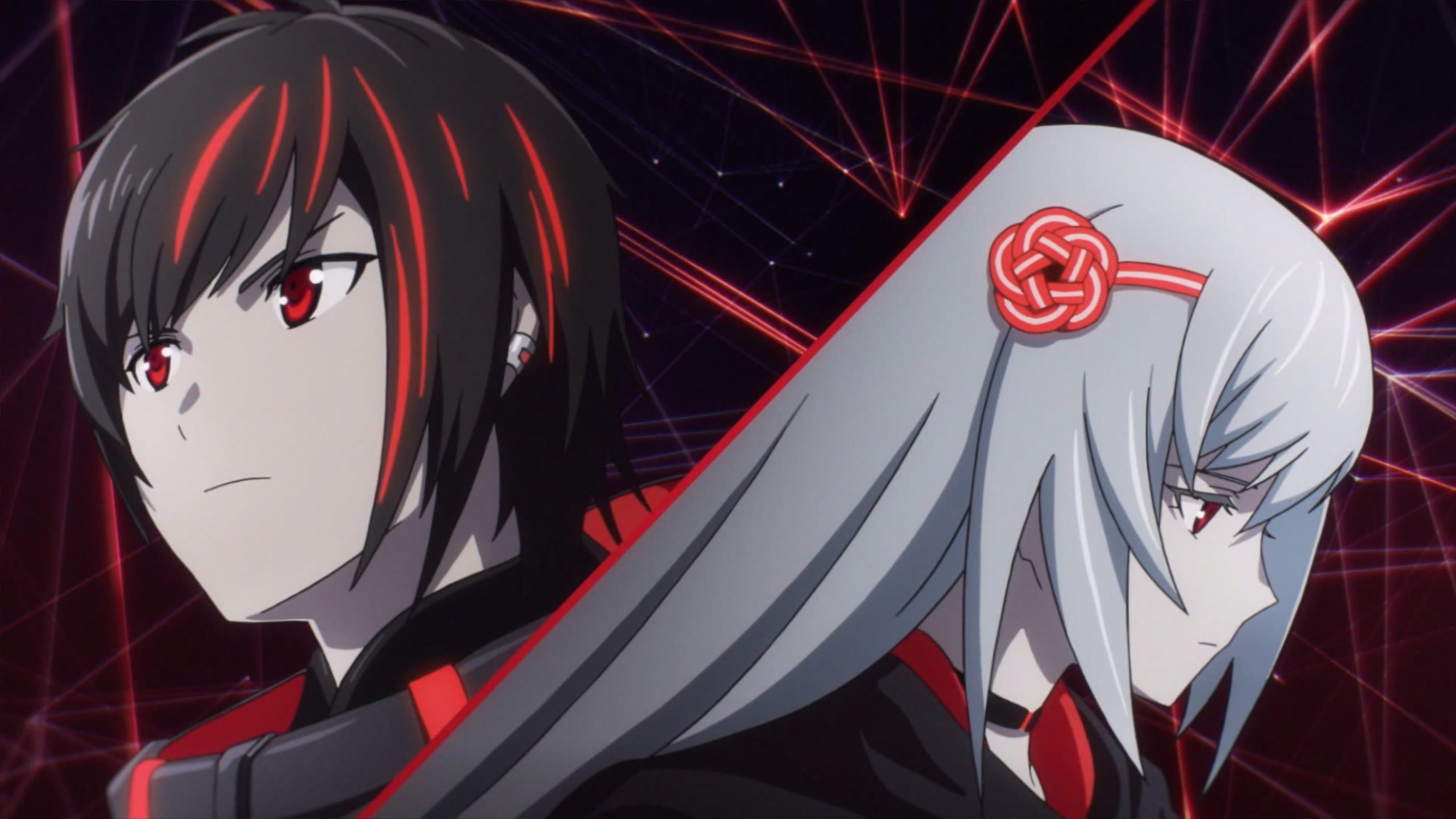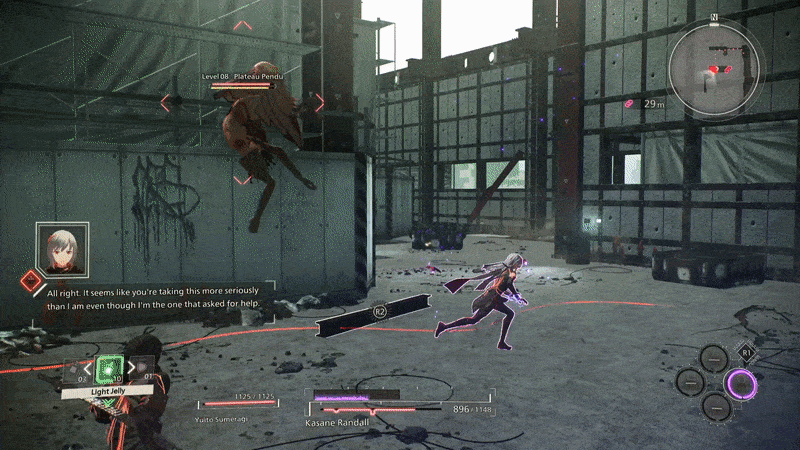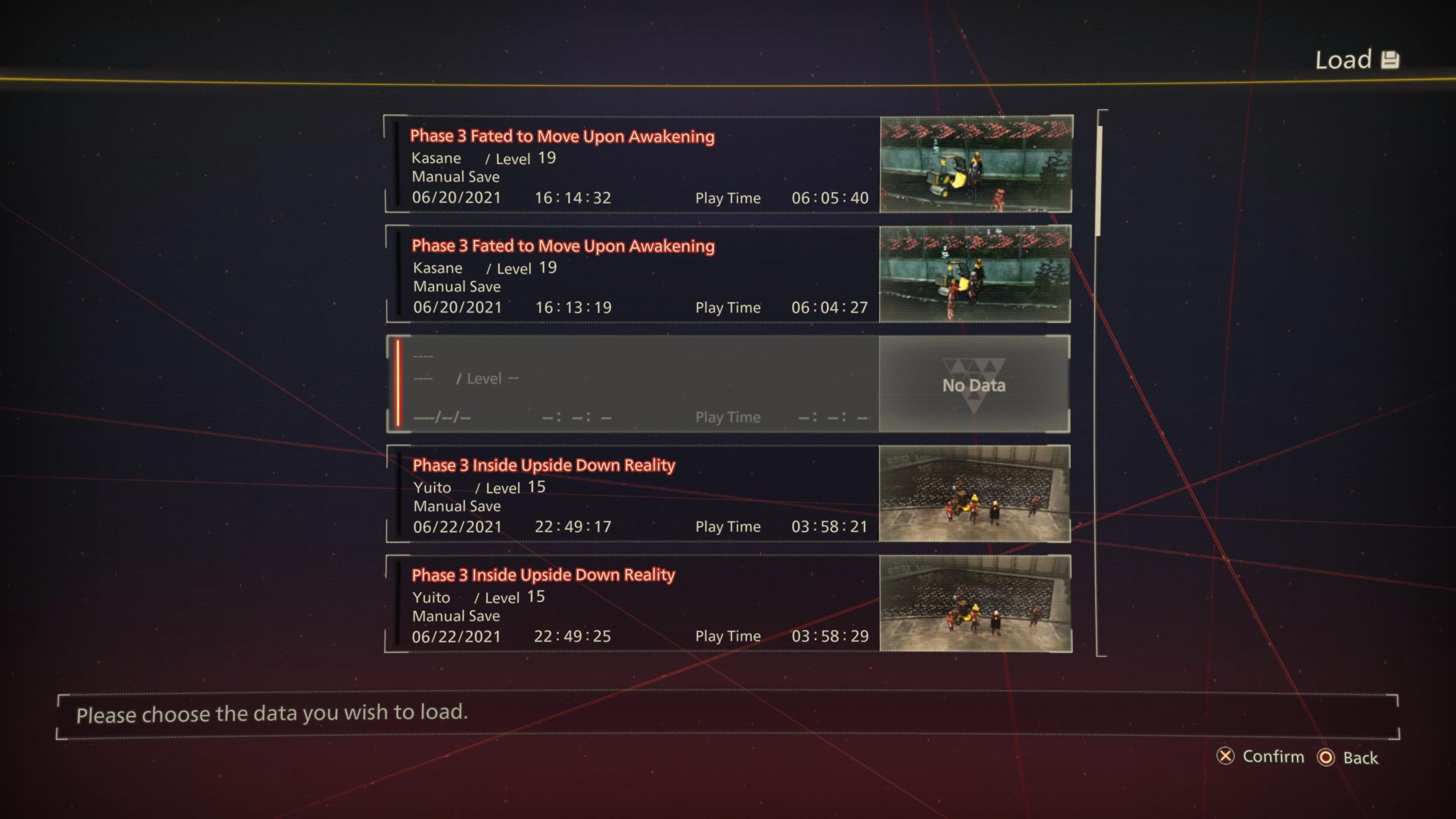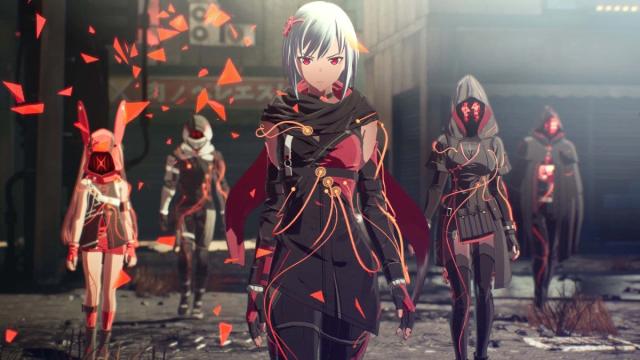Right out of the gate, Scarlet Nexus shows off its gimmick. You can play as one of two characters, viewing the same storyline from different perspectives. Both share the same formidable telekinetic superpower, spicing up what appears to be typical blade-swinging combat. While cool, it initially seems like these are the game’s only tricks, and that you’ll deal little more over the course of 50 hours. But Scarlet Nexus ramps up fast. I just can’t say for sure if it maintains the speed.
Scarlet Nexus, initially unveiled at an Xbox event last year, comes out this Friday for PlayStation, Xbox, and PC. At the time, Kotaku’s Ethan Gach described it as an “anime-as-hell” action-RPG. Now that I’ve spent a dozen hours or so with the full game, yes, I can confirm, Scarlet Nexus is indeed exactly that. (Fun fact: The venerable animation studio Sunrise is producing a Scarlet Nexus anime. That’s out later this month.) To whit, the game even boasts that requisite Bandai Namco JRPG Anime Intro:
At first blush, Scarlet Nexus might even seem like any Tales game — artistically, thematically, musically — except with an emphasis on action. Fans of Bandai Namco’s long-running series will instantly note too that Scarlet Nexus can definitively be categorised as science fiction, a stark contrast to the typically fantasy-inspired Tales games. The setting allows it to be nightmarishly weird.
What’s Scarlet Nexus about?
Scarlet Nexus takes place far in the future, after humanity discovers a cerebral hormone that begets superpowers in certain individuals. Around the same time, armies of mushroom zombie demons, deemed Others, start falling from the sky. These Others — who, by the way, love eating brains — are resistant to stuff like bullets and bombs, which is very inconvenient for humanity but quite convenient for the game’s plot. As such, humanity’s vestiges of superhumans band together to establish a military agency called the Other Suppression Force (OSF). It surely won’t surprise you to hear that this military agency has some majorly dystopian vibes.

You play as one of two young OSF recruits. There’s Yuito Sumeragi, the youngest living heir to the country’s founding family. (Scarlet Nexus portrays Yuito as unlike most rich kids: hard-working, kind-hearted, easy-going.) Opposite Yuito is Kasane Randall. When she was young, her parents were killed in an Other attack, so she was subsequently adopted by the family who runs the country’s most significant defence contractor. Naomi, Kasane’s new sister, has an enormous crush on Yuito. Meanwhile, Yuito can’t stop thinking about Kasane. He claims it’s not because of a crush but because, when he was young, an OSF soldier who looks exactly like her saved him from an Other attack, inspiring him to eventually sign up. Sure, bud. Whatever you say.
How does combat work?
Both Yuito and Kasane can lift heavy objects — cars, light posts, vending machines, you name it — with their minds. Were it not for such superhuman abilities, combat in Scarlet Nexus would fall into the bog-standard action combat format of “press Square to attack and Circle to dodge.” Instead, it’s a whirlwind of violet-hued chaos. You slash a mushroom zombie with your sword (as Yuito) or knives (as Kasane). You dash backward. You toss a bench into its face. You close the distance with the push of a button, a move the game calls a “rush attack.” You then hurl a fridge, a dumpster, a pile of steel beams, an entire decommissioned eight-car subway train — whatever’s closest will do the trick.
This all sounds overwhelming and hectic, but in practice is rather effortless — a boon for players who might find complex battle systems unapproachable. There’s no need to line up precise aiming or get the timing of a quick-time event just right. If an object is within range and you’re able to toss it, just hold down the right trigger, no matter what other actions you’re in the middle of, and Yuito or Kasane will handle the rest.
Are there other powers besides telekinesis?
Scarlet Nexus mixes things up further by giving you access to the powers of fellow OSF soldiers. The OSF features a typical military structure, despite the fact that most of the ranks appear in their teens or early 20s. These kids joke and flirt and break for trips to the restaurant where everyone else hangs out. They also risk their lives on a daily basis. (It’s somewhat reminiscent of Fire Emblem: Three Houses, where you’d see typical school yard drama in one scene and brutal, relentless war in the next.) Yuito and Kasane belong to separate platoons, which means you’re generally exposed to new characters depending on which storyline you’re playing, though sometimes their respective teams exchange members.
Every one of these characters has a different superpower. Thanks to what Scarlet Nexus calls “brain link,” you can borrow these abilities, provided that character is in your party. One can turn invisible (and turn you invisible as a result). Another can move at the speed of sound (and make you move Sonic-fast). Some can infuse your attacks with immolating or electrifying effects. You can activate these at the push of a button, and they’re all tied to relatively short cooldown. Powers aside, the characters are generally well-written and against type, which is a nice bonus.

Though you can technically change your lineup at a hideout between story chapters, it hasn’t had much bearing on how I play, at least not where I’m at in the game. So far, the story has dictated which characters accompany me on missions. On one hand, the ever-shifting lineup means the game has forced me to use different powers for every string of battles, which has prevented me from sticking with a lineup that could then grow stale. On the other, I kinda wish I could mix and match party members how I see fit.
How does the dual storyline thing work?
Look, the dual storylines are fascinating, especially if you’re a sucker for that sort of thing. During the prologue and first chapter, the plot follows the same beats, like you’re just watching the same car crash from different sides of the street. The threads quickly diverge, imparting meaningful effects on how the game plays out. For instance, at one point in the second chapter, Kasane is knocked cold. When she comes to, Yuito is kicking the daylights out of a building-sized Other. If you’re playing Kasane’s storyline, you skip that boss fight. During Yuito’s, you don’t. (It sucks.) On the flip side, Kasane and Yuito go their separate ways shortly thereafter, and she quickly comes across a completely different significant enemy.
Branching pathways like this are riveting, but it’s hard not to ache for the game to do just a bit more with it. I’ll admit that my experience is possibly coloured by how I”m playing the game: Basically, I’m juggling the plot. So far, I’ve played about six hours of each storyline. I’ll play one chapter as one character. Then I’ll quit out and play that same chapter as the other.
This means, if I’ve given Shiden — an irascible, arrogant jerk with bad glasses — a new weapon in Kasane’s storyline, and I know for a fact that he has that weapon at that specific point in the plot of Yuito’s, he won’t have that weapon equipped when I switch. It’s a minor thing, to be sure, but it totally takes me out of the continuity.

That’s not all. In juggling two storylines at the same time, I’ve had to sit through each tutorial twice. (I’ve also had to be really careful with save-scumming. Thankfully, Scarlet Nexus allows you to juggle a whole bunch of files.) Maybe there’s a new game plus mode that solves all of these squabbles. In any case, I haven’t reached that point, and haven’t found an easy way to make it so the game recognises I’m playing both storylines at once.
I would like to tell you that a dozen hours with Scarlet Nexus is enough to offer a full assessment. That would be a lie. Though I thought I knew what it was all about, Scarlet Nexus has consistently surprised me at every turn. Even though I played the demo — which showcased some of the various powers you could activate in combat — I did not expect combat to be as deep and varied as it is. No spoilers, but I’ve even found myself caught completely off-guard by plot twists at points.
If the game keeps up the surprises, I’d be confident defending it as one of the greats. If it doesn’t, well, it’s been fun.

Leave a Reply